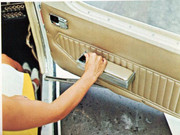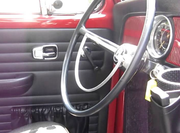My first plane was a well used 1961 Cherokee 160, serial number 30 out of the then new Vero Beach factory.
Addressing various points in prior posts:
1. Mine had no toe brakes at all, just the handle. I thought for sure I would have to retrofit them. Flew the plane for several years and several hundred hours, never needed to add the toe brakes.
2. You can go a lot of places in a Cherokee. Perfect for two people and baggage (mine had a 980 lb useful load and 50 gal fuel). I flew it twice to Oshkosh, a 2400 nm round trip from where I live. Chester can stretch out on the back seat, no problem.
3. Love the trim on the ceiling. My current Piper, an Aztec, has electric trim. I still reach up and make fine adjustments using the crank on the ceiling. It's just intuitive. I've had 5 Pipers, and much prefer the ceiling mounted trim over those with the wheel.
4. Judicious management of the power just off idle will lead to consistently soft landings. As an owner this quickly becomes routine, you just do it automatically. The Hershey Bar wing doesn't fly in ground effect as well as higher aspect ratio wings seem to.
5. The semi-tapered wing of the Warrior isn't enough of an improvement to justify the price premium imo. The Hershey bars are way better value for money (I've owned four Cherokee derivatives, and have lots of hours with both types of wings).
6. I'm envious of
@Timbeck2 Cherokee - I wish any of mine looked that good!





